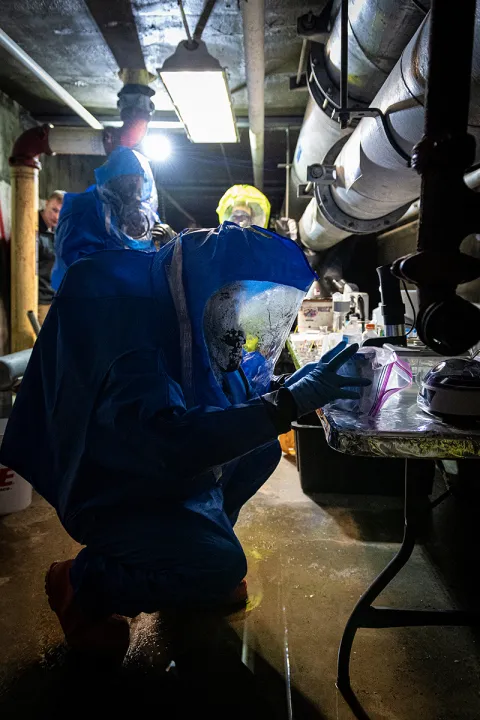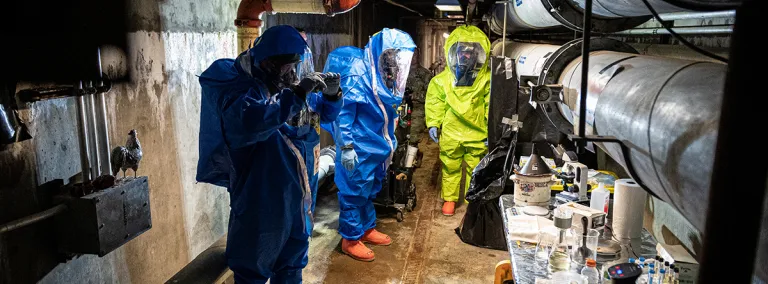SURF serves as incident location site during Rushmore Roundup regional training exercise
On April 26, multiple agencies responded to training scenarios staged at the Sanford Underground Research Facility
The Sanford Underground Research Facility (SURF) has a comprehensive safety program and an on-call Emergency Rescue Team (ERT), ready to respond to emergencies at any time. Some potential emergencies, however, could require a response from highly specialized, external agencies.
That’s why SURF volunteered to serve as an incident site location during the “Rushmore Roundup,” a regional training exercise hosted by the South Dakota National Guard in partnership with several local, state and federal agencies.
"We have had a long and productive partnership with the South Dakota National Guard for many years," said Mike Headley, laboratory director of SURF. "The national guard has established agreements to respond with the State of South Dakota. We are able to leverage those agreements to assist each other when we need to respond. We generally do at least one larger exercise event at SURF each year that includes the national guard and other national, state, and local partners. We appreciate having these partnerships in place to help provide the resources we needed to operate SURF safely."
While SURF’s ERT team did not directly participate in the Rushmore Roundup drill, they provided the location and support. “Our team was here to provide some site-specific training and a space for them to set up and respond to the scenarios,” said Paul “Woody” Hover, SURF ERT supervisor.
The Rushmore Roundup exercise involved National Guard Civil Support Teams (CST) from seven states, including the South Dakota National Guard’s 82nd CST, and seven partner agencies. Other incident locations included Mount Rushmore National Memorial, Badlands National Park and Custer State Park.

“Working with our civilian counterparts, developing those relationships, it allows us to work together and learn how each other’s procedures work and operate,” said Lt. Col. Patrick Flanagan, commander of the 81st CST. “And then, in the event that there’s a real-world situation, we already have built those relationships and can come together and work effectively.”
On April 26 and 27, more than 100 participants responded to separate incidents over a 48-hour period that challenged each team to practice communication, procedures and coordination.
At SURF, training scenarios included simulated chemical and biological hazards. The scenarios were addressed by members of the Rapid City/Pennington County Hazardous Materials Emergency Response Team and the North Dakota National Guard’s 81st CST. Members of the South Dakota National Guard 82nd CST were also onsite.
“Hosting the exercise was a good opportunity for our team as well, because we got to observe the scenario and response,” Hover said. “If there was ever a real-life scenario like this at SURF, these are the types of teams we would want to respond, so it was good to see the inter-agency coordination and communication, and also some of the equipment, like the mobile laboratory.”
